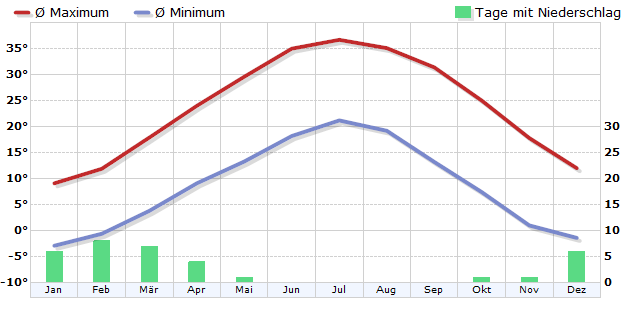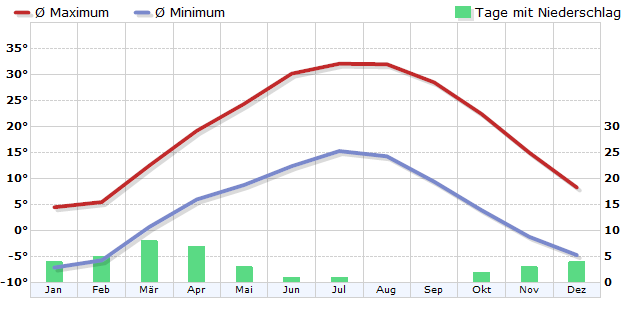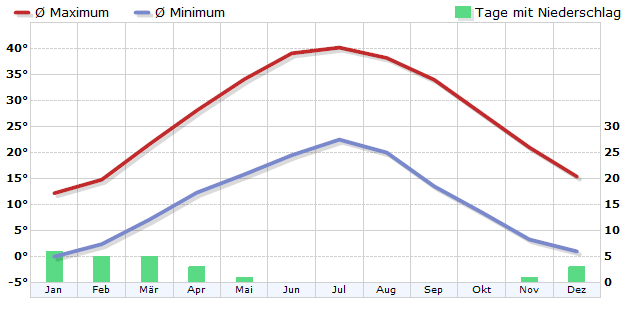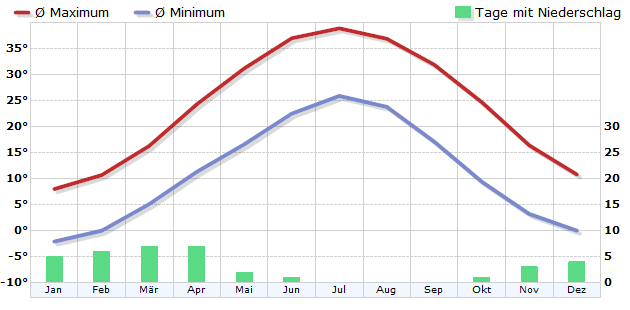Climate Afghanistan
Afghanistan's continental climate is characterised by warm, dry summers with plenty of sunshine and rainy winters. The topographical conditions - parts of Afghanistan are high up in the mountains and others are deserts - mean that there are considerable climate differences between the different parts of the country.
In summer, dry, fairly steady winds blow from northern directions. In almost cloudless weather it gets very hot during the day. At noon in Kabul temperatures above 33°C can be measured. In Herat the thermometer also climbs up to 38°C, in Kandahar up to 40°C. At night the temperatures often drop by more than 20°C. In the months from June to September the "wind of 120 days" blows in the western parts of Afghanistan. These winds, which carry masses of sand and dust, often assume storm strength. Occasionally, dust storms may also occur in mountainous areas above 2,000 m.
The east and southeast of the country is sometimes affected by the Indian summer monsoon in July and August (more thunderstorms and precipitation and rising humidity). September is characterized by low cloud cover and dry weather. In October, temperatures often drop below freezing at night, and the first snowfalls occur in the west and north. Depending on how high you are, the winters in Afghanistan can be very cold.
The average humidity in summer is about 25-42 percent, in winter about 62-79 percent.
The best time to visit Afghanistan is between April and June or October/November.




